Mangrove
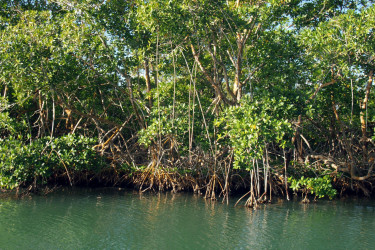
Legende
The mangrove swamp with its mangrove trees sinking their roots into the water
Credit
© Frederic Fasquel
What is a mangrove?
The mangrove is a forest between sea and land, in the intertidal zone, which is subject to variations in the level, salinity and temperature of the water.
Most trees in the mangrove belong to the mangrove family, with different species spanning the area from sea to land. Rooted in the low-oxygen mud, their aerial roots allow them to breathe. Their seeds germinate before separating from the tree and planting themselves by falling in the mud.
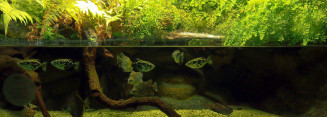
Legende
Mangrove tank at the Tropical Aquarium
Credit
© Frédéric Fasquel
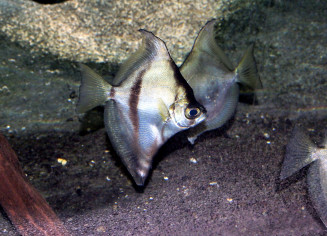
African sunfish - Monodactylus sebae
Photo : Déodat Manchon © Palais de la Porte Dorée
Which species can be found there?
While there are few species of tree in a mangrove, the fauna there is abundant and varied. Crabs, molluscs, crustaceans and fish are omnipresent. The periophthalmus lives on roots and breathes in the air through its skin. The archerfish sprays water from its mouth onto small insects present on plants, causing them to fall and be eaten. There is considerable bird life too, like the red ibis. Other residents of the mangrove may include crocodiles, marine turtles, hippopotamuses, tigers and macaques…
A unique and beneficial ecosystem
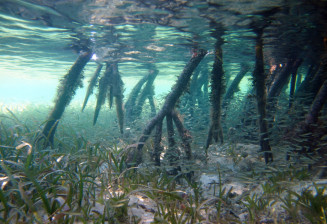
Underwater view of the marine part of the mangrove, with mangrove roots, refuge areas for small fish
© Frédéric Fasquel
The water in mangroves is rich in nutrients and sometimes suspended matter. The tangled roots provide effective protection for fish and crustaceans who come there to breed, and for their young, for whom they serve as a veritable nursery.
The services provided to human populations by the mangrove are many: protection of coasts, heating wood, medicinal plants, fish and shellfish as food sources… One hectare of mangrove trees can supply over 400 kg of marine animals every year!
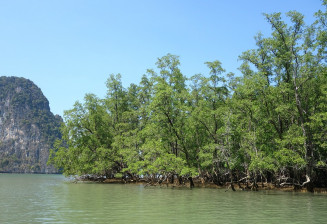
Mangrove and sea
© Frédéric Fasquel
Did you know that the mangrove is the only coastline that gradually moves towards the sea? All other coastlines retreat from the assaults of the waves. But the vegetation in a mangrove softens the wave action through a breakwater effect, encouraging the deposit of muddy sediment, which is quickly colonised by the mangrove trees. As a result, almost 75% of tropical coasts are protected by mangroves.
Unfortunately, urbanisation, overfishing, land clearance, pollution and tourism now threaten that precarious balance. Entire mangrove area are being removed to make way for shrimp farms or hotel complexes. But in many places, the mangrove is protected and mangrove trees are being replanted to restore the many services provided by this ecosystem.

